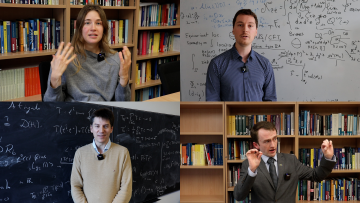15:00
Random quotients of hierarchically hyperbolic groups
Abstract
Quotients of hyperbolic groups (groups that act geometrically on a hyperbolic space) and their generalizations have long been a powerful tool for proving strong algebraic results. In this talk, I will describe the geometry of random quotients of certain of groups, that is, a quotient by a subgroup normally generated by k independent random walks. I will focus on the class of hierarchically hyperbolic groups (HHGs), a generalization of hyperbolic groups that includes hyperbolic groups, mapping class groups, most CAT(0) cubical groups including right-angled Artin and Coxeter groups, many 3–manifold groups, and various combinations of such groups. In this context, I will explain why a random quotient of an HHG that does not split as a direct product is again an HHG, definitively showing that the class of HHGs is quite broad. I will also describe how the result can also be applied to understand the geometry of random quotients of hyperbolic and relatively hyperbolic groups. This is joint work with Giorgio Mangioni, Thomas Ng, and Alexander Rasmussen.


